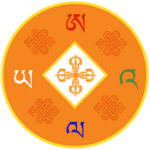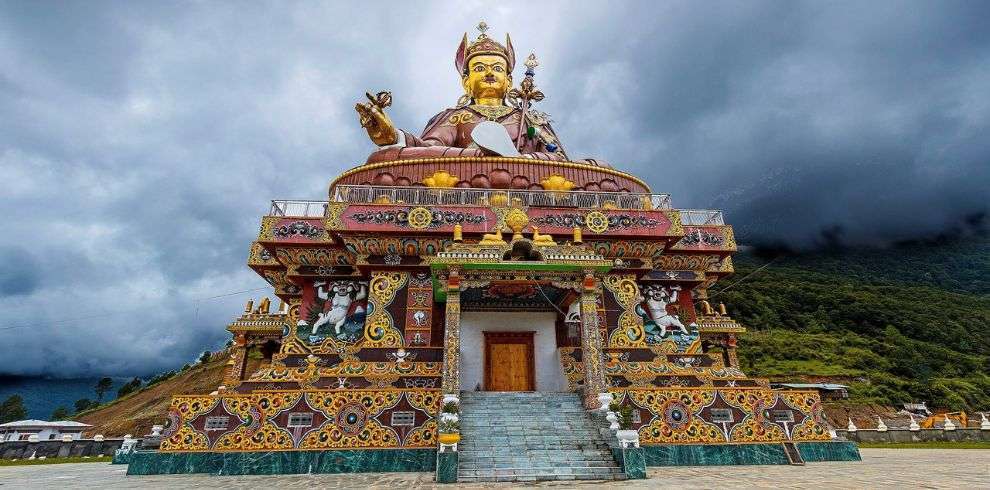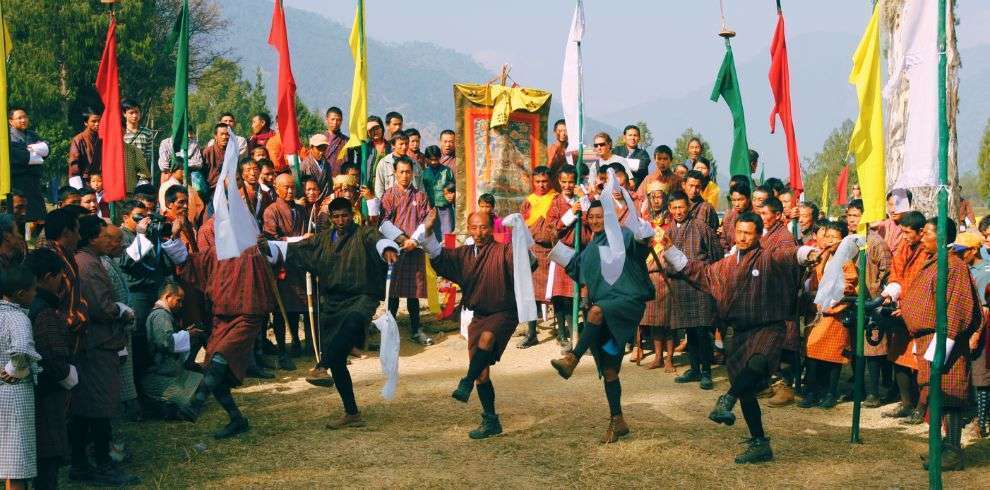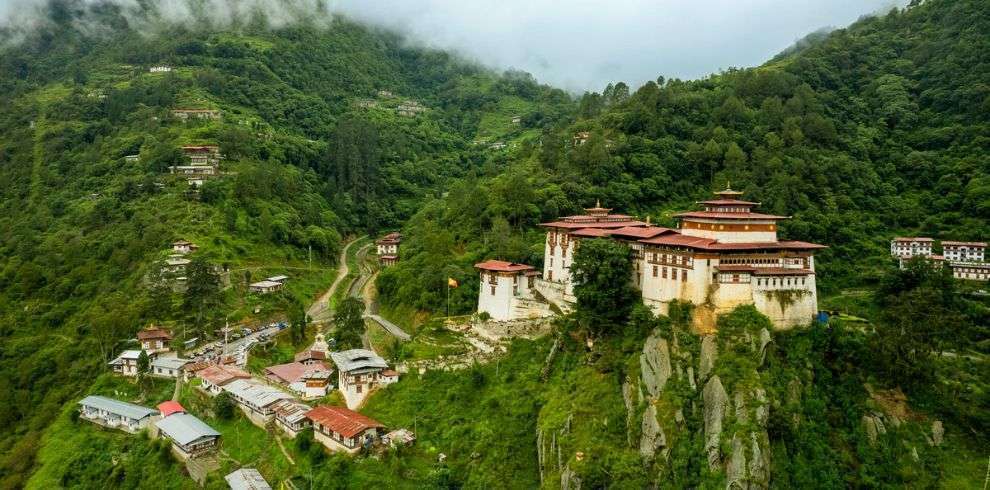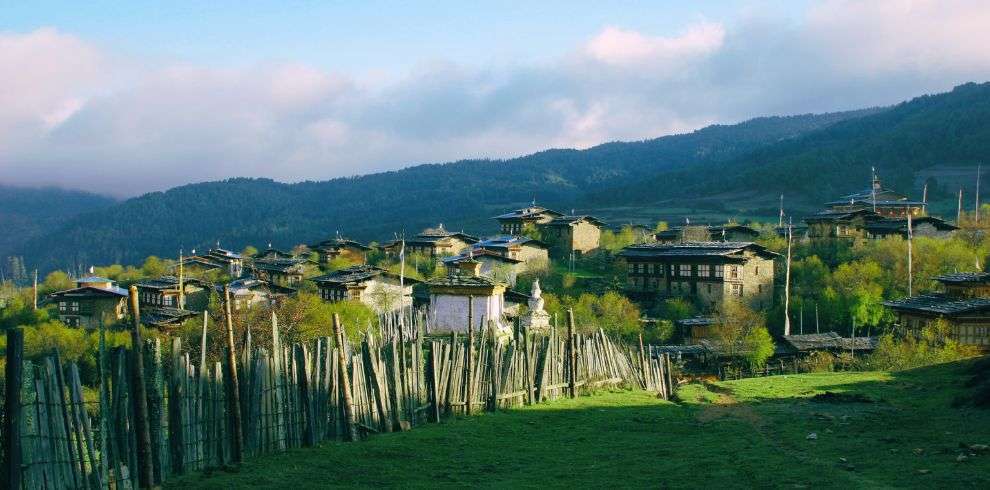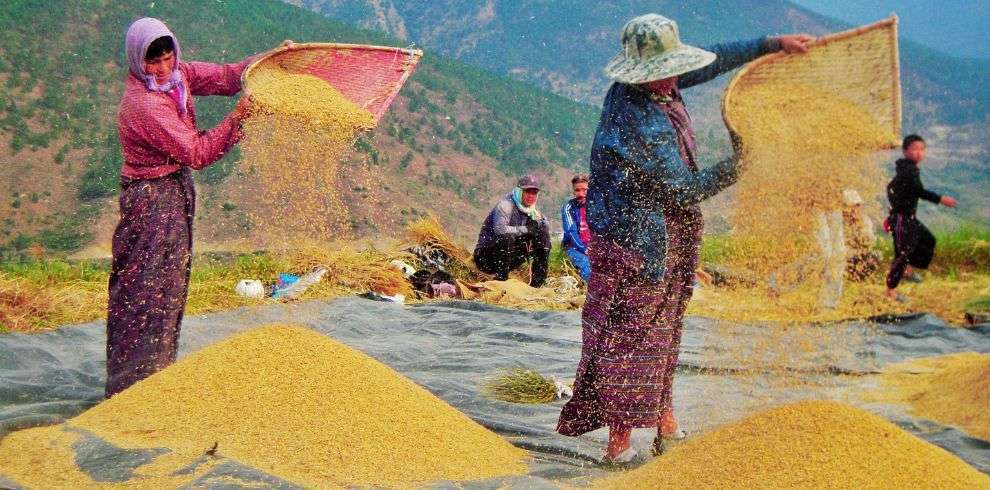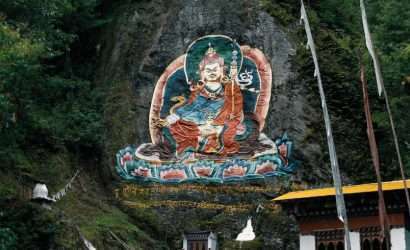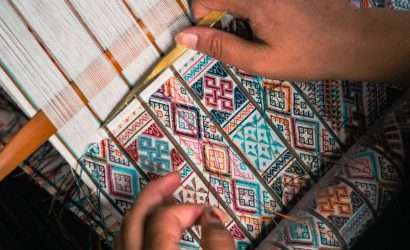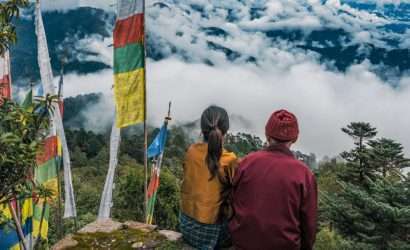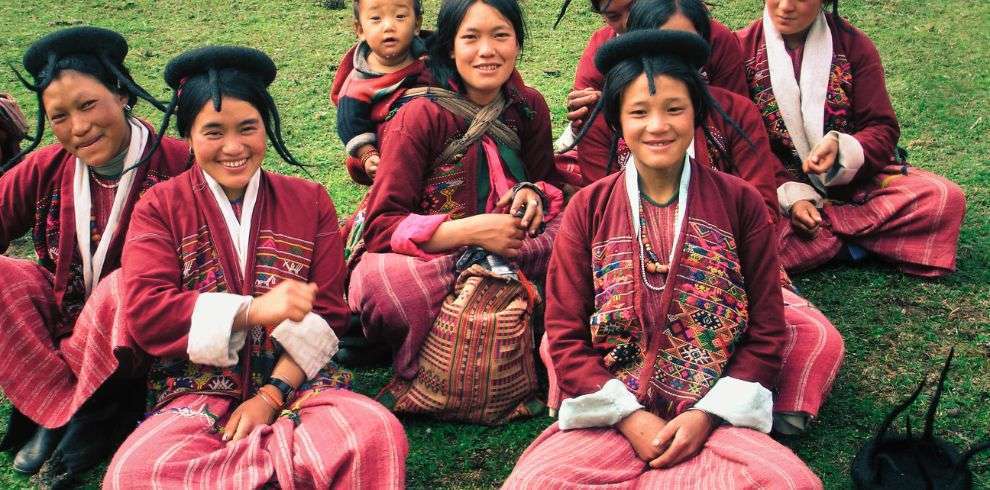This Blissful Escapes – ENCHANTING EASTWARD Bhutan tour is a breathtaking trip around this Himalayan kingdom. It covers in-depth all the highlights of this land of the thunder dragon and allows you time to explore the many sights in great depth. You also get plenty of time to take in the unique culture of the people of this ancient country. One of the major highlights of this tour is a visit to the stunning Taktsang Monastery, better known as the tiger’s nest and enchanting exotic eastern Bhutan.
This tour takes in all the best sights and culture of exotic eastern Bhutan, it visits some stunning valleys and small villages allowing you to get up close and personal with the friendly and welcoming Bhutanese people and the stunning natural beauty of this country. Along the way, you visit glaciers and get awesome views of the eastern Himalayan range. It’s a breathtaking discovery tour of this rich and vibrant land.
Overview
This tour takes in all the best sights and culture of exotic eastern Bhutan, it visits some stunning valleys and small villages allowing you to get up close and personal with the friendly and welcoming Bhutanese people and the stunning natural beauty of this country. Along the way, you visit glaciers and get awesome views of the eastern Himalayan range. It’s a breathtaking discovery tour of this rich and vibrant land.
Tout Highlights
- Visits some of the grand, beautifully built fortresses called Dzongs at Trashigang, Lhuentse and Trashiyangtse.
- Attend Chorten Kora Festival: The local tribes from across the border (Arunachal Pradesh) also come to enjoy the uniqueness of this Festival
- Take part in Gomphu Kora Festival , one of the culturally rich festivals of Bhutan.
- Institute of Zorig Chusum: (School of 13 Art and Craft). At the institute you will see student at work and can also purchase handicrafts made by them.
- Learn Pottery: Gangjur village is around 10 minutes drive from Lhuentse Dzong.
- Textile Tour: Khoma Village is the epicenter of Bhutan’s rich textile weaving tradition.
- Dungkar Ngatshang: The house of Dungkar, one of the noble lineage was home to Jigme Namgyel Wangchuk, the father of Wangchuck Dynasty.
- Guru Statue Takila: The 173 ft. tall statue of Guru Padmasambhava stands imposingly on the slopes of Takila, overlooking the scenic valley of Tangmachu.
Itinerary
Today, you will arrive at the International Airport at Paro flying aboard the National Carrier, Druk Air or Bhutan Airlines over some of the most scintillating views of the Himalayan Region to a warm welcome by the tour staff. You will then be taken for lunch in the town center of Paro. Then we begin with your sightseeing by driving to Thimphu.
• On the drive to Thimphu, we stop at Tachogang Lhakhang Bridge for a photo session.
• Visit the Buddha Dordenma in the afternoon, which is a gigantic statue of Shakyamuni Buddha overlooking the Thimphu Valley.
• Then, it is the Heritage Museum, which is housed in a large house built 300 years ago.
• The day finally ends with a visit to Tashichho Dzong, which is a Buddhist Monastery cum fortress built in 1216 by Lama Gyalwa Lhanapa.
Completing breakfast, we go to the Memorial Chorten, a chorten built in memory of the late Druk Gyalpo, Jigme Dorji Wangchuck in 1974. Then we head to the Takin Zoo, to see the strange looking Takin that is the national animal of Bhutan. Once this is completed, we drive to Punakha:
• The drive takes us over the Dochula Pass at 3,100 meters. Where we stop to get a panoramic view of the high snow-capped mountain peaks.
• Punakha dzong – In the afternoon, we pay a visit to the Punakha Dzong, a fortress constructed in 1637 by the first Rinpoche Ngawang Namgyal, which is the second oldest and largest in Bhutan.
• Cantilever Bridge – We cross the cantilever bridge to the other side of Po Chhu River to the other side. This wood covered bridge gives us a lovely view of the immediate surroundings.
• Chimi Lhakhang – Is a temple five kilometers to the east of Punakha Dzong, which we pay a visit to. It is a temple dedicated to Drukpa Kunley, affectionately called the divine madman. This temple is visited by infertile couples.
• Khamsum Yulley Namgyal Stupa Hike- The day begins with a beautiful hike to the Khamsum Yuelley Namgyal Stupa, which was built to remove negative forces and promote peace, stability, and harmony in the changing world.
Today, after an early breakfast we take a seven-hour drive to Bumthang via Trongsa. In Trongsa, we stop off at the large Trongsa Dzongs which was built in 1513. Then we continue onto Bumthang. When we reach there, we check into a hotel for the night.
We spend the whole day sightseeing in Bumthang today. We start by visit:
• Member Tsho where scriptures are said to be hidden by Padmasambhava.
• Kurjey Lhakang, where the remains of the first three kings of Bhuta.
• The Jakar Dzongs in the next town.
• Jambay Lhakhang one of the most ancient temples in Bhutan.
Today we take a visit to the Tang Valley. It is an eleven Km drive and arrives at the Pema Tekchok Choeling Shedra, a large nunnery where stop for the view and then carry onto Ta Rimochen Lhakhang and pay a visit to the temple. Then we come down to the village of Ogyen and see how the people live there, from where we return back to Bumthang.
Today, we take a drive to the village of Ura in Bhutan which is in close proximity to Bumthang. Its main attraction is the Ura Dzongs and the medieval atmosphere that prevails in the villages there. Women especially still wear sheep’s clothing. After confronting the sights and sounds of Ura, we drive back to Bumthang.
Today, we drive to Mongar from Bumthang, which has the Thrumshingla National Park and distinct dialects of the east. We stop here at a hotel.
Today we drive to Lhuentse and pay a visit to the Guru Lhakhang (Giant Statue of Guru Padmasambhava) and visit to Khoma village. After this we return to Mongar and check into a hotel.
Guru Nangsey Zilneon in Takila, Lhuentse - The 154-ft tall statue is seated on a 38-ft high lotus-base on a hill in Takila, overlooking Tangmachu village in Menbi gewog.
Khoma Village - This small village is situated about two hours walk from Lhuntse Dzong, through gentle slopes carpeted with pine trees. This village is known throughout the country for its production of Kishuthara, an extremely intricately patterned silk textile. The women of Khoma work in makeshift textile cottages, weaving delicate designs and patterns. Producing and selling Kishuthara has become the primary occupation of many of the villagers, and it will be much cheaper to acquire some of this beautiful material here than in the handicraft shops in the capital.
Today, we drive to Tshigang taking in the rural settings of eastern Bhutan. We return back to Mongar in the evening. We stay the night in a hotel Mongar.
Dramitse Lhakhang - One of the most notable religious sites is the Dramitse Lhakhang built in the 16th century by Ani Cheten Zangmo, the daughter of the renowned terton Pema Lingpa. The Dramitse Ngacham or the “Dance of the Drums of Dramitse,” was born in this Lhakhang in the 16th century. Today, it is a popular dance performed at all major festivals. It is also on the esteemed UNESCO World Heritage list.
Gom Kora - 24 km from Trashigang, the temple of Gom Kora is set on a small alluvial plateau overlooking the Dangmechu river.
Trashigang Dzong - Built in 1659, on a spur overlooking the Dangmechu river, Trashigang Dzong or the fortress of the auspicious hill has been the political stronghold of eastern Bhutan for over 300 years. The Landscape on which the Dzong stands is not only picturesque but arouses curiosity.
Today, we retrace our steps back to Bumthang, taking in the rural setting as on the way out. We stay the night in a hotel.
Today from Bumthang we drive to Gangtey drive onto Gantey over the Tashi-la Pass. In Gangtey, we pay a visit:
Black-Necked Crane Information Centre - The valley of Phobjikha is known as the winter home of the Black-necked Crane (Grus Nigricollis). Bhutan is home to around six hundred black-necked cranes with Phobjikha being one of the popular places that the birds migrate to in the winter months from the Tibetan plateau. The elegant and shy birds can be observed from early November to an end of March.
Gangtey Goempa - Situated south of the road and east of Wangdue Phodrang, is Gangtey Gompa, an old monastery dating back to the 17th century. The largest Nyingma monastery in western Bhutan, it was founded in 1613 by Gyalse Pema Thinlay.
Phobjikha Valley- Well known as the winter home of the Black-necked Crane (Grus Nigricollis). Bhutan is home to around six hundred black-necked cranes with Phobjikha being one of the popular places that the birds migrate to in the winter months from the Tibetan plateau. The elegant and shy birds can be observed from early November to an end of March. Overlooking the Phobjikha valley is the Gangtey Goempa. This is an old monastery that dates back to 17th century. We stay the night at the hotel.
From Gangtey, we drive onto Thimphu through the rural but burlesque countryside stop at monastery and shrines at some village along the way.
Today, after completing breakfast, we take a two-hour drive to CHELI LA PASS, It is one of the highest road points in Bhutan and offers breathtaking views of the mountains. It is situated at an elevation of 3,988 meters/13,084 feet between the Paro and Haa valleys. The pass itself is marked by a multitude of prayer flags that seem to spear the intense blue skies! On a clear day, you can get a breathtaking view of Mt. Jomolhari and other Himalayan giants.
Take a short day hike to Kila Gonpa Nunnery, it straddles the cliff facing Paro, with great views of Paro valley and Jele Dzong. There are seven small temples and several retreat huts built into a dizzying cliffside, where about seventy nuns live in self-imposed isolation. After that, we return to Paro.
Today, we drive to the base of Taktsang Monastery and take a two and a half hike up to the Taktsang Monastery, through some groves of pine and rhododendron trees with views of the surrounding land changing increase in elevation. The Taktsang Monastery which seems perched against the cliff is nearly 3000 meters above sea level. It is believed the Guru Rinpoche came flying here on the back of a tigress to meditate for three months. Later we return to Paro and can spend the remaining time around the streets of Paro.
Now, since your tour is complete, we shall take you to the International Airport and bid you farewell for your flight to your next destination.
Note: This itinerary is a sample itinerary intended to give you a general idea of a trip to Bhutan. We can tailor an itinerary to suit your requirements and interests. Please contact us to customized the exact itinerary you desire
The Trip Cost Includes
- Department of Tourism’s certified 3 star Standard hotel accommodation twin sharing room;
- All Meals.
- USD 100 nightly SDF Fee (Sustainable Development fee) that goes for free education and health care for the citizens of Bhutan and tourist alike.
- Tourism Council’s certified Professional English speaking Cultural tour guide.
- Comfortable Toyota/Hyundai Tour Vehicle with Tourism Council’s Certified Driver.
- Mineral Water
- Domestic travel insurance.
- Entry Fees to museums, cultural monuments and fortresses.
- Visa/Permit process.
- USD 40 Visa fee
The Trip Cost Excludes
- Any airfare.
- Any cost of excess baggage/weight.
- Tips to the guide and driver.
- Beverage, alcohol, laundry and any personal nature expenses.
Annapurna Base Camp is a Grade B or a moderately difficult trekking route. So any fit person can do this trek, even if you do not have any previous experience. You should be aware of what to expect and mentally prepare for it. Then, as long as you will to, you can.
On average, you walk about 4 to 6 hours per day. One or two days can be as less as 3hrs and one or two days can be as long as 7hrs.
The highest altitude reached is 4190m. This is the elevation of Annapurna Base Camp. ABC is the highest we will climb in this trek.
Yes, you can charge batteries en route. Charger should be brought. There are hot shower facilities as well. You may have to pay certain amount for both ($1-$2). Negotiate. Also, hot water facility could be free at lower elevation.
No. There are no ATMs on this trek route. You will have to draw enough cash in Pokhara or Kathmandu. There are a number of ATMs in these cities. Everything is paid in Nepali rupees. So money should be exchanged before the start of the trek.
Yes. Internet can be accessed in most places. Sometimes, there might be some technical problems. Internet in Nepal is not as fast as you are used to and at times you can just lose connection.
Not really. It depends on you. If you want, ABC trekking can be done independently. You could hire a guide and a porter by yourself instead of going through an agency or not hire a guide at all. Although, not having a guide can be a little problematic during off season.
It really depends on you. Is it your first time in Nepal? How confident are you of being able to find your way around? How pressed on time are you? If you go through an agency, it will be costlier but everything will be planned. You will only have to come, trek and return.
For Annapurna region, pay for guides range from $20 to $30 per day and porters take $15 to $25 per day.
